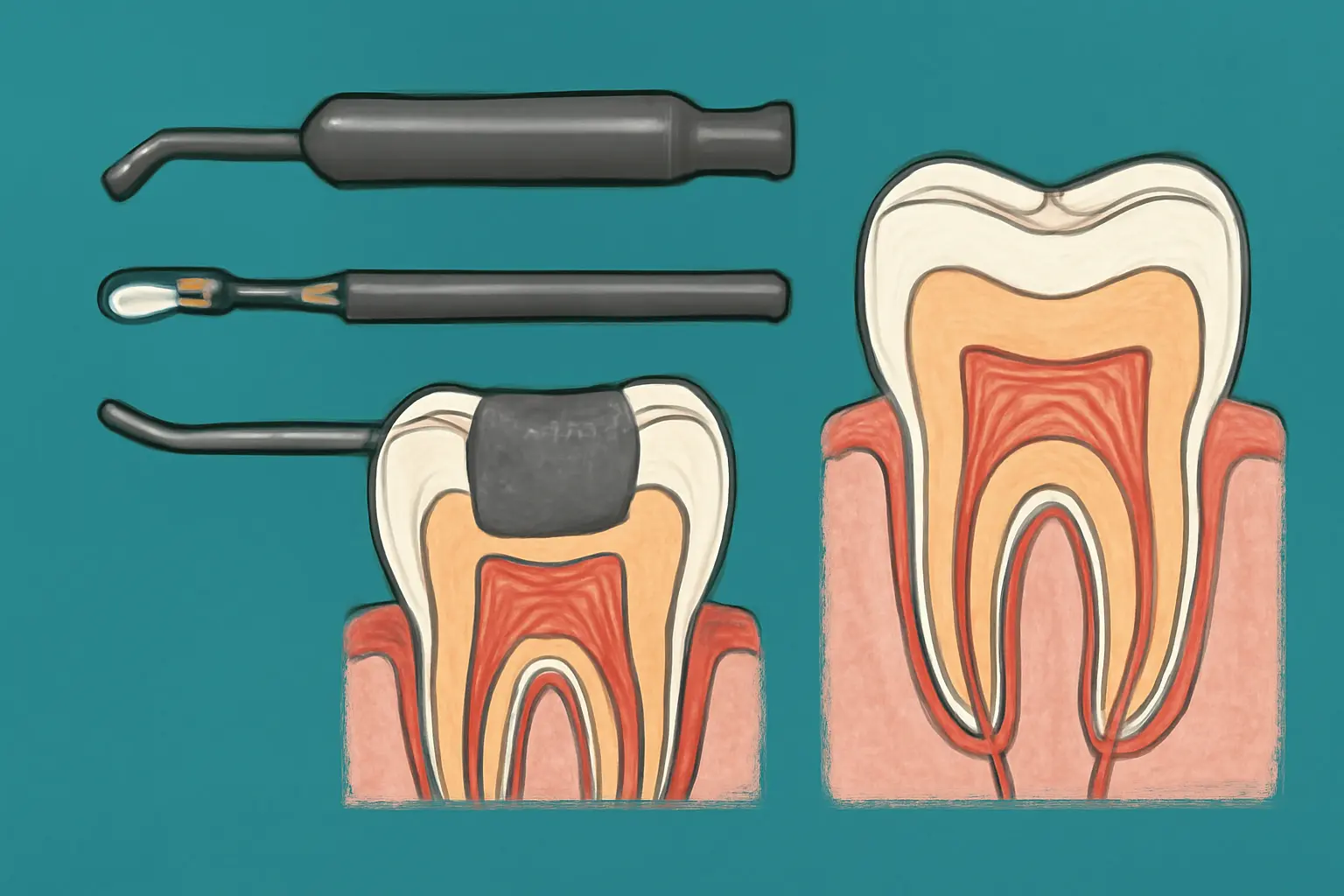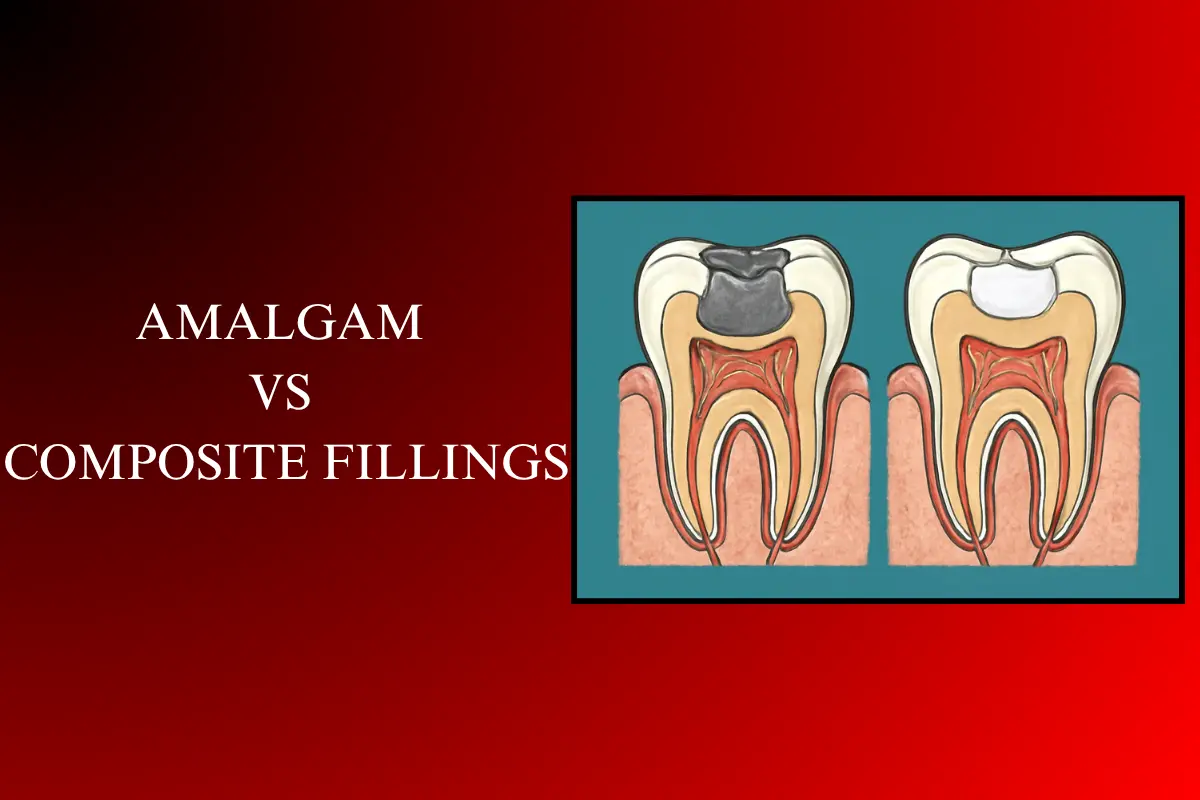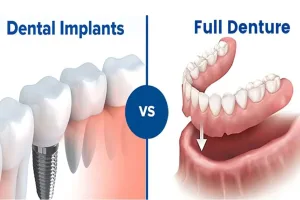When it comes to repairing cavities, one of the most common questions patients ask is: “Should I choose amalgam or composite fillings?” Both types of dental fillings are widely used to restore decayed teeth, but they differ in materials, aesthetics, durability, and cost.
At Night and Day Emergency Dentist, we treat hundreds of patients every week who walk in with toothaches, chipped teeth, or broken fillings, often needing a fast yet reliable fix. That’s why we believe it’s essential to understand the difference between amalgam vs composite fillings, especially if you’re visiting us in an emergency.
In this guide, we’ll break down the key differences between amalgam vs composite fillings so you can make the right choice for your oral health and lifestyle.
Short Summary
- Amalgam and composite fillings are common solutions for restoring decayed teeth, differing in material, appearance, durability, and cost.
- Amalgam is a durable metal alloy, ideal for back teeth and large cavities, while composite is tooth-colored and better for visible areas.
- Choosing the right filling depends on tooth location, cavity size, budget, cosmetic preference, and concerns about mercury.
- Both options are safe, effective, and can often be provided during emergency visits at Night and Day Emergency Dentist.
- Dentists assess your specific situation to recommend the best option for long-lasting dental health and aesthetics.
Amalgam vs Composite Fillings: Side-by-Side Comparison

| Feature | Amalgam Fillings | Composite Fillings |
|---|---|---|
| Material | Metal alloy (silver/mercury) | Resin-based, tooth-colored |
| Appearance | Silver/gray | Matches tooth shade |
| Durability | 10–15+ years | 5–10 years (varies by size/location) |
| Ideal Use | Back molars, chewing surfaces | Front teeth, visible areas |
| Cost | Generally lower | Slightly higher |
| Placement Time | Quicker and easier | Takes more time and precision |
| Tooth Preservation | Removes more tooth | Minimally invasive |
| Mercury Content | Yes | No |
Which Filling Is Right for You?
- Tooth Location: Back molars? Amalgam for strength. Front teeth? Composite for aesthetics.
- Cavity Size: Small to medium cavities suit composite; large ones may need amalgam.
- Budget: Amalgam is often more affordable, but composite offers better appearance.
- Personal Preferences: Mercury-free? Go composite. Want invisibility? Choose composite.
What Dentists Recommend
- Composite is ideal for small to medium visible cavities.
- Amalgam suits large restorations in high-stress areas.
- Decision depends on your bite, decay, habits, and cosmetic goals.
How We Help You Choose at Night and Day Emergency Dentist
- Need it fast and affordable? Amalgam is usually best for back teeth.
- Want it to blend in naturally? Composite is ideal for visible teeth.
- Worried about long-term durability? We explain pros and cons clearly.
- Prefer a mercury-free solution? Composite has no metal.
With clinics open 7 days a week, day and night, our emergency dentists ensure you never have to wait to restore your smile.
Conclusion
Both amalgam and composite fillings offer reliable solutions for treating tooth decay, but they come with different benefits. If you value strength and durability for your molars, amalgam fillings may be right for you. If you prefer a more natural look and minimal invasiveness, composite fillings are likely the better option.
The best way to decide? Talk to your dentist. They can assess your individual case and recommend the most suitable material for long-lasting dental health.




